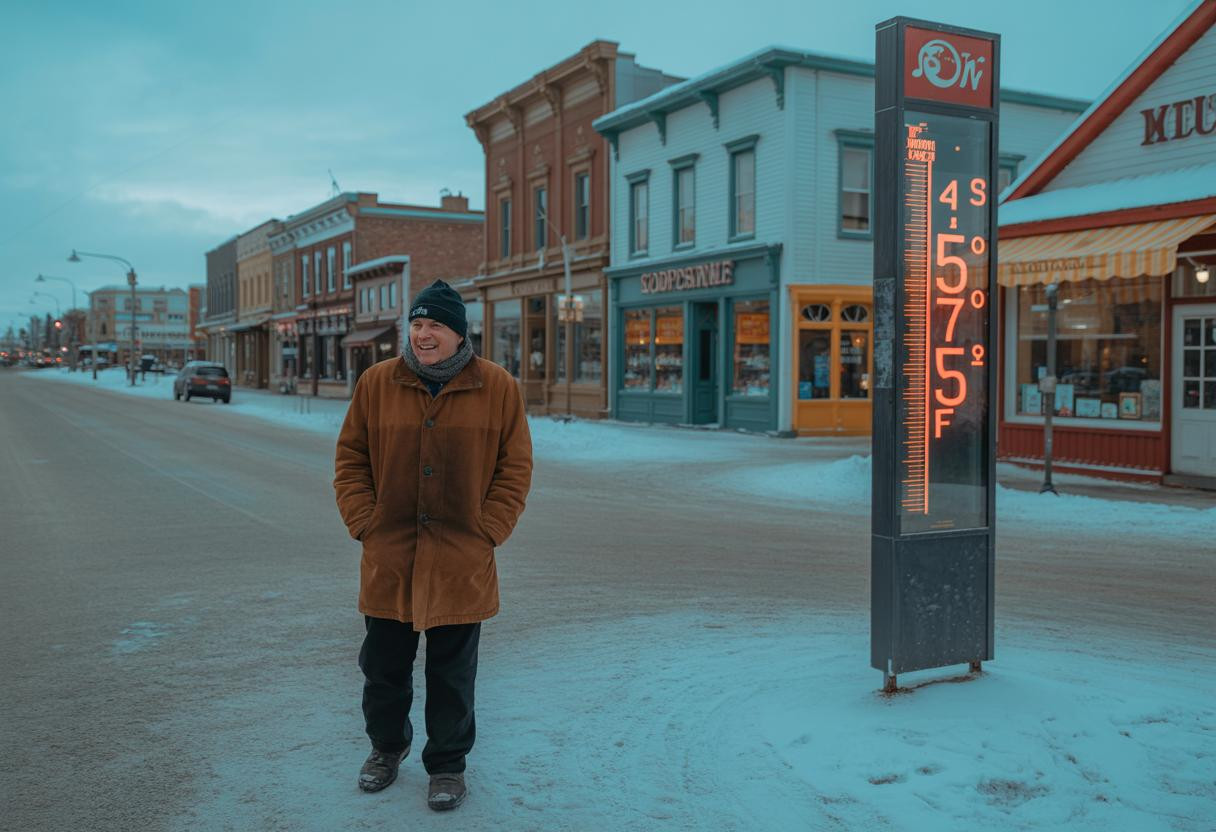Nestled in Wyoming’s rugged wilderness, Bondurant routinely records temperatures that would make most freezers jealous – with recent readings hitting -36°F and historical lows plummeting to -57°F. This tiny mountain town has become an unlikely laboratory for human resilience, economic innovation, and scientific discovery, all while maintaining a population that chooses to call one of America’s coldest inhabited places home.
The science behind America’s natural deep freeze
Bondurant’s extreme temperatures aren’t just bad luck – they’re the result of a fascinating meteorological phenomenon called a “cold sink.” Surrounded by mountains at 6,600 feet elevation, the town sits in a natural bowl that traps frigid air like a giant outdoor refrigerator.
When cold air settles into this valley, it has nowhere to escape. The surrounding peaks create a thermal prison where temperatures can drop 20-30 degrees below neighboring areas just miles away. This same mechanism occurs in other extreme cold locations worldwide, creating natural laboratories for studying scientific research on environmental conditions.
Recent meteorological data shows Bondurant experienced -36°F in early 2025, while Wyoming’s state record of -66°F was recorded at nearby Riverside Ranger Station in 1933. These aren’t one-time events – they’re predictable patterns that occur when Arctic air masses settle into the region’s unique topography.
How residents thrive in sub-zero survival mode
Infrastructure adaptations that work
Living in Bondurant requires more than just extra blankets. Residents invest in heavy-duty insulation systems that can withstand sustained sub-zero temperatures for weeks. Propane heating systems become essential, as traditional heating methods often fail when temperatures drop below -20°F consistently.
Vehicle winterization isn’t optional – it’s survival. Every car needs engine block heaters, specialized antifreeze, and emergency supplies that can sustain life if stranded during extreme cold snaps. Many residents maintain backup generators and food storage systems that rival those used in remote living and community resilience situations.
The psychology of extreme cold living
Surprisingly, many Bondurant residents chose this lifestyle deliberately. They prioritize natural beauty and self-sufficiency over urban conveniences, creating tight-knit communities where neighbors genuinely depend on each other during crisis situations.
Turning frozen wasteland into economic opportunity
While most businesses flee extreme cold, Bondurant has discovered unique revenue streams. The town now features an ice bar constructed entirely from local snow and ice – a tourist attraction that literally couldn’t exist anywhere warmer.
Winter recreation opportunities include cross-country skiing, fat biking, and ice skating on naturally frozen surfaces. These activities draw adventure tourists specifically seeking authentic extreme cold experiences that can’t be replicated in milder climates.
The economic model mirrors innovations seen in other challenging environments, where communities develop innovative cold-weather growing techniques to create sustainable local economies despite harsh conditions.
Practical strategies for extreme cold adaptation
Essential preparation techniques
Layer clothing systems using moisture-wicking base layers, insulating mid-layers, and windproof outer shells. This three-layer approach prevents both overheating during activity and hypothermia during rest periods.
Emergency preparedness includes maintaining 72-hour supply kits in vehicles, homes, and workplaces. These kits must account for heating fuel, non-perishable food, and communication devices that function in extreme cold conditions.
Health considerations and hidden benefits
Counterintuitively, residents often report improved cardiovascular health and mental resilience from adapting to extreme conditions. However, prolonged exposure requires monitoring for cold-related health impacts similar to those studied in research on health impacts of extreme environmental conditions.
What Bondurant teaches us about human adaptability
Bondurant proves that extreme environments can foster innovation rather than simply creating hardship. The town’s residents have developed practical solutions for cold-weather living that could benefit Arctic communities worldwide, while creating economic opportunities that transform geographic disadvantages into unique assets.
Their success demonstrates that human adaptability combined with community cooperation can thrive even in Earth’s most challenging inhabited environments.
